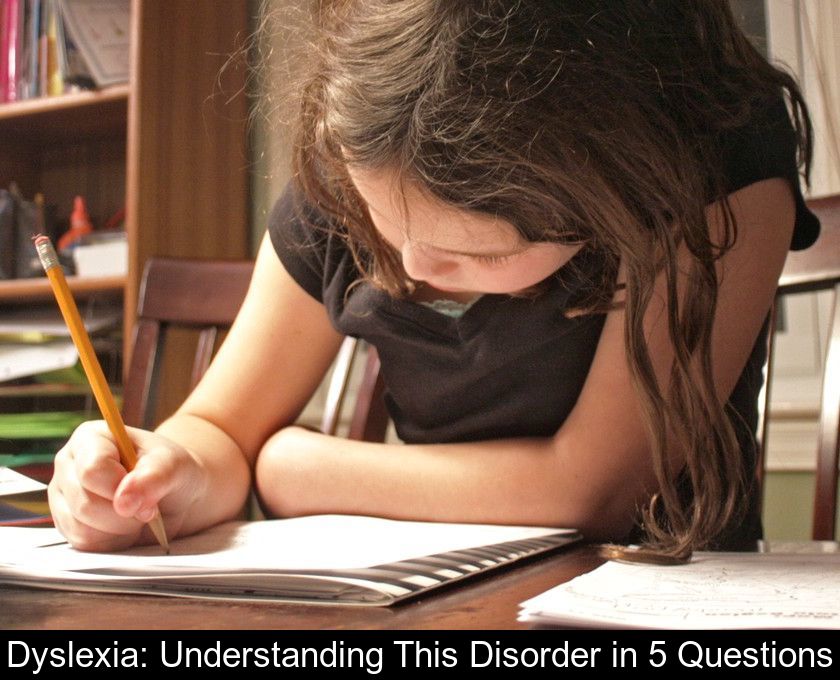Dyslexia: Understanding This Disorder In 5 Questions
Dyslexia, which is characterized by difficulty in associating letters and sounds during the learning process of reading, affects 5% to 10% of schoolchildren in France. Long victims of misconceptions, these students do not always receive appropriate support, even though their learning difficulties are now officially recognized as a neurodevelopmental disorder. We propose to help you better understand the most well-known of the "dys" disorders through 5 questions.
1- What is dyslexia?
Dyslexia is a disorder that affects the learning of reading and writing. Referring to the Greek etymology of the word, "dyslexia" is a language disorder (from "dys," "difficulty," and "lexis," "words").
This particular difficulty in identifying letters, syllables, or words manifests in the absence of any visual, auditory, or intellectual deficits and despite normal schooling. It is frequently accompanied by spelling difficulties, hence the use of the more specific term "dyslexia with dysorthography."
This condition affects boys more often than girls. It has been recognized by the WHO as a developmental disorder of academic skills since 1991 and by France as a neurodevelopmental disorder only since 2018!
Several famous dyslexics have made their mark on history: Leonardo da Vinci, Auguste Rodin, Thomas Edison, Winston Churchill, Albert Einstein, and even Gustave Flaubert!
2- What are the signs of dyslexia?
The most characteristic signs of Dyslexia are:
• visual confusions between letters with similar or symmetrical shapes (m and n; b and d; p and d; u and n).
• auditory or phonetic confusions between neighboring sounds (d and t; f and v; oi and a).
• inversions of letters within syllables ("clo" for "col").
• inversions of syllables within words ("pestacle" instead of spectacle).
• omissions or additions of letters in words.
• poor word segmentation.
• slowness in decoding the read text.
Dyslexia is a serious handicap for learning to read, as a dyslexic child cannot properly segment words and sentences and transform written symbols into corresponding sounds.
This disorder alone is enough to explain the learning difficulties of the affected children. It is now known that these students lack neither education nor goodwill, but it must continue to be emphasized because "dys" children are victims of many prejudices or misconceptions.
3- How to diagnose dyslexia?
Before diagnosing dyslexia, it is necessary to eliminate other possible causes of reading difficulties, including:
• hearing impairment;
• vision problems;
• speech disorders;
• psychological and emotional disorders;
• intellectual deficit.
Dyslexia can thus be defined as a persistent difficulty in learning to read in intelligent children who are normally educated and free from sensory disorders.
Note: despite advances in neuroscience, the causes of dyslexia are not precisely known. The onset of this disorder is independent of the child's school environment, socio-cultural background, and the language foundations they have been taught.
4- What medical follow-up for dyslexic children?
Rehabilitation with a speech therapist, supported by an educator or a psychotherapist, usually allows children suffering from dyslexia to learn to read.
However, this rehabilitation generally only achieves an incomplete correction of the children's difficulties in spelling (dysorthography).
The care of dyslexic children is only partially reimbursed by Social Security. Indeed, only speech therapy sessions are reimbursed up to 60%. All other consultations remain fully at the parents' expense if they are conducted in private practices. Only certain mutual insurance companies reimburse part of these costs.
5- What school accommodations for dyslexics?
Dyslexia requires long-term management. School adaptation and parental involvement are two essential factors to help the child overcome this disorder.
Note: This problem can be exacerbated by a lack of reading practice, hence the importance of practicing reading with the child from an early age.
Ideally, speech therapist follow-up should be accompanied by adjustments in the child's schooling.
There are two adaptations that make life easier for students with dyslexia:
1- The use of a computer, which requires less manual dexterity for writing.
2- The use of more "spaced out" course materials with larger characters.
Neuroscience has indeed shown that spacing out letters helps dyslexics read faster.







